5.10.2024
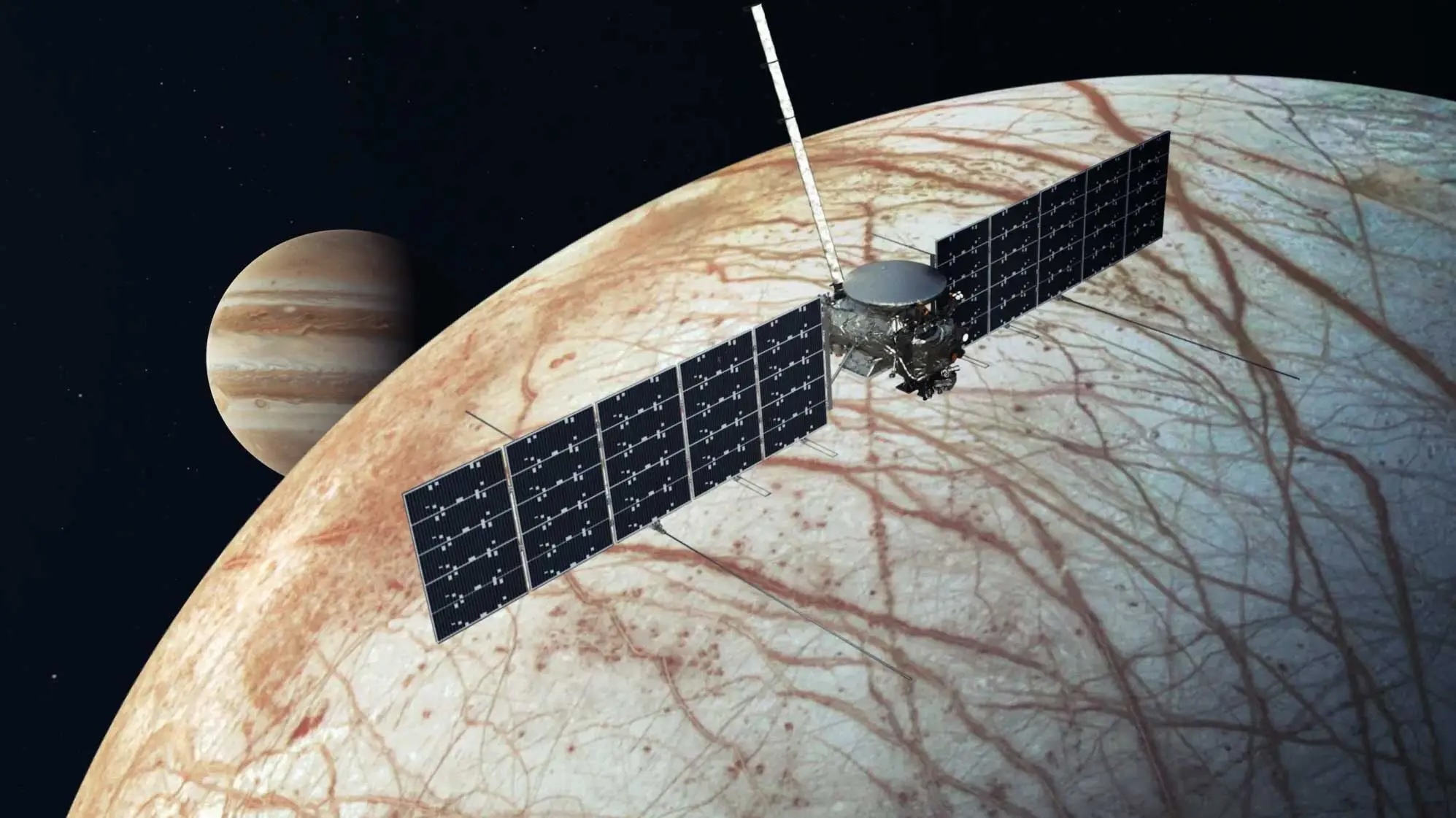
NASA will provide live coverage of prelaunch and launch activities for Europa Clipper, the agency’s mission to explore Jupiter’s icy moon Europa. NASA is targeting launch at 12:31 p.m. EDT Thursday, Oct. 10, on a SpaceX Falcon Heavy rocket from Launch Complex 39A at NASA’s Kennedy Space Center in Florida.
Beyond Earth, Jupiter’s moon Europa is considered one of the solar system’s most promising potentially habitable environments. After an approximately 1.8-billion-mile journey, Europa Clipper will enter orbit around Jupiter in April 2030, where the spacecraft will conduct a detailed survey of Europa to determine whether the icy world could have conditions suitable for life. Europa Clipper is the largest spacecraft NASA has ever developed for a planetary mission. It carries a suite of nine instruments along with a gravity experiment that will investigate an ocean beneath Europa’s surface, which scientists believe contains twice as much liquid water as Earth’s oceans.
For a schedule of live events and the platforms they’ll stream on, visit:
https://go.nasa.gov/europaclipperlive
The deadline for media accreditation for in-person coverage of this launch has passed. NASA’s media credentialing policy is available online. For questions about media accreditation, please email: ksc-media-accreditat@mail.nasa.gov.
NASA’s mission coverage is as follows (all times Eastern and subject to change based on real-time operations):
Tuesday, Oct. 8
1 p.m. – In-person, one-on-one interviews, open to media credentialed for this launch.
3:30 p.m. – NASA’s Europa Clipper science briefing with the following participants:
- Gina DiBraccio, acting director, Planetary Science Division, NASA Headquarters
- Robert Pappalardo, project scientist, Europa Clipper, NASA JPL
- Haje Korth, deputy project scientist, Europa Clipper, Applied Physics Laboratory (APL)
- Cynthia Phillips, project staff scientist, Europa Clipper, NASA JPL
Coverage of the science news conference will stream live on NASA+ and the agency’s website, Learn how to stream NASA content through a variety of platforms, including social media.
Media may ask questions in person and via phone. Limited auditorium space will be available for in-person participation. For the dial-in number and passcode, media should contact the NASA Kennedy newsroom no later than one hour before the start of the event at: ksc-newsroom@mail.nasa.gov.
Wednesday, Oct. 9
2 p.m. – NASA Social panel at NASA Kennedy with the following participants:
- David Grinspoon, senior scientist for Astrobiology Strategy, NASA Headquarters
- Caley Burke, flight design analyst, NASA’s Launch Services Program
- Erin Leonard, project staff scientist, Europa Clipper, NASA JPL
- Juan Pablo León, systems testbed engineer, Europa Clipper, NASA JPL
- Elizabeth Turtle, principal investigator, Europa Imaging System instrument, Europa Clipper, APL
The panel will stream live on NASA Kennedy’s YouTube, X, and Facebook accounts. Members of the public may ask questions online by posting to the YouTube, X, and Facebook live streams or using #AskNASA.
3:30 p.m. – NASA’s Europa Clipper prelaunch news conference (following completion of the Launch Readiness Review), with the following participants:
- NASA Associate Administrator Jim Free
- Sandra Connelly, deputy associate administrator, Science Mission Directorate, NASA Headquarters
- Tim Dunn, launch director, NASA’s Launch Services Program
- Julianna Scheiman, director, NASA Science Missions, SpaceX
- Jordan Evans, project manager, Europa Clipper, NASA JPL
- Mike McAleenan, launch weather officer, 45th Weather Squadron, U.S. Space Force
Coverage of the prelaunch news conference will stream live on NASA+, the agency’s website, the NASA app, and YouTube.
Media may ask questions in person and via phone. Limited auditorium space will be available for in-person participation. For the dial-in number and passcode, media should contact the NASA Kennedy newsroom no later than one hour before the start of the event at ksc-newsroom@mail.nasa.gov.
5:30 p.m. – NASA’s Europa Clipper rollout show. Coverage will stream live on NASA+, the agency’s website, the NASA app, and YouTube.
Thursday, Oct. 10
11:30 a.m. – NASA launch coverage in English begins on NASA+ and the agency’s website.
11:30 a.m. – NASA launch coverage in Spanish begins on NASA+, the agency’s website and NASA’s Spanish YouTube channel.
12:31 p.m. – Launch
Audio only of the news conferences and launch coverage will be carried on the NASA “V” circuits, which may be accessed by dialing 321-867-1220, -1240 or -7135. On launch day, “mission audio,” countdown activities without NASA+ media launch commentary, is carried on 321-867-7135.
Live Video Coverage Prior to Launch
NASA will provide a live video feed of Launch Complex 39A approximately 18 hours prior to the planned liftoff of the mission on the NASA Kennedy newsroom YouTube channel. The feed will be uninterrupted until the launch broadcast begins on NASA+.
NASA Website Launch Coverage
Launch day coverage of the mission will be available on the agency’s website. Coverage will include links to live streaming and blog updates beginning no earlier than 10 a.m., Oct. 10, as the countdown milestones occur. On-demand streaming video and photos of the launch will be available shortly after liftoff.
Follow countdown coverage on the Europa Clipper blog. For questions about countdown coverage, contact the Kennedy newsroom at 321-867-2468.
Para obtener información sobre cobertura en español en el Centro Espacial Kennedy o si desea solicitar entrevistas en español, comuníquese con Antonia Jaramillo: antonia.jaramillobotero@nasa.gov o Messod Bendayan: messod.c.bendayan@nasa.gov
Attend the Launch Virtually
Members of the public can register to attend this launch virtually. NASA’s virtual guest programfor this mission also includes curated launch resources, notifications about related opportunities or changes, and a stamp for the NASA virtual guest passport following launch.
Quelle: NASA
----
Update: 14.10.2024
.
NASA's Europa Clipper could launch Monday atop of SpaceX Falcon Heavy from KSC
Even as Florida works to clean up and assess damage after Hurricane Milton swept through the state, NASA's eyeing the possibility of getting quickly back to the business of launching rockets with the long anticipated Europa Clipper mission.
The spacecraft atop a SpaceX Falcon Heavy rocket could launch as soon as 12:06 p.m. EDT on Monday, October 14, from Kennedy Space Center.
NASA's initial assessment determined there was minor damage to the spaceport, and as of Friday morning, NASA was conducting a deep inspection into Cape Canaveral and Merritt Island facilities. Timing will all depend on the damage found during this assessment. For the latest updates, go to floridatoday.com/space.
This mission is going to one of Jupiter's moons, Europa, requiring the services of a big Falcon Heavy. Jupiter is 480 million miles from Earth and the planets need to be in a good position to shorten travel. The spacecraft only has so much fuel it can carry, and NASA needs to make use of timing and position in coordinating the best launch window.
Opportunities to launch extend through Nov. 6.

Besides Earth, is there life in our solar system?
That’s what NASA’s Europa Clipper is seeking to discover. It will do so by observing Jupiter’s moon, Europa, for the ingredients that can support life – most likely as in microbial lifeforms.
Out of Jupiter’s 95 moons, why Europa? It is highly suspected that Europa is in the right place to support an ocean world underneath its icy surface.
According to NASA, Europa Clipper’s objectives are to determine the thickness of the moon’s icy surface and its interactions with an ocean below. Basically, this astrobiology mission will look into Europa's composition, seeking the ingredients needed to support life.
The mission is managed by NASA’s Jet Propulsion Laboratory (JPL) in Pasadena, California.
What is the trajectory of Europa Clipper?
Europa Clipper will travel past Mars and then back towards Earth, using the planets’ gravity as a slingshot to add speed to the spacecraft’s trek toward Jupiter.
Still, Jupiter is far away and the spacecraft can only travel so fast. Europa Clipper will travel 1.8 billion miles (2.9 billion km) to reach Europa in April of 2030.
When it does reach the destination, it will orbit Jupiter and preform 49 close approaches to Europa − this is where the name "Clipper" comes into play. It will be using nine science instruments and a gravity experiment on these flybys.
When is SpaceX launching NASA's Europa Clipper?
Depending on severity of damage from Hurricane Milton, launch could be as soon as 12:06 p.m. Monday. If that doesn't work, there are other opportunities in the coming week.
Next week's instantaneous launch windows are as follows:
- Tuesday, October 15 at 11:59 a.m.
- Wednesday, October 16 at 11:52 a.m.
- Thursday, October 17 at 11:45 a.m.
- Friday, October 18 at 11:38 a.m.
- Saturday, October 19 at 11:31 a.m.
Quelle: Florida Today
----
Update: 14.10.2024
.
Start von NASAs Europa Clipper Mission
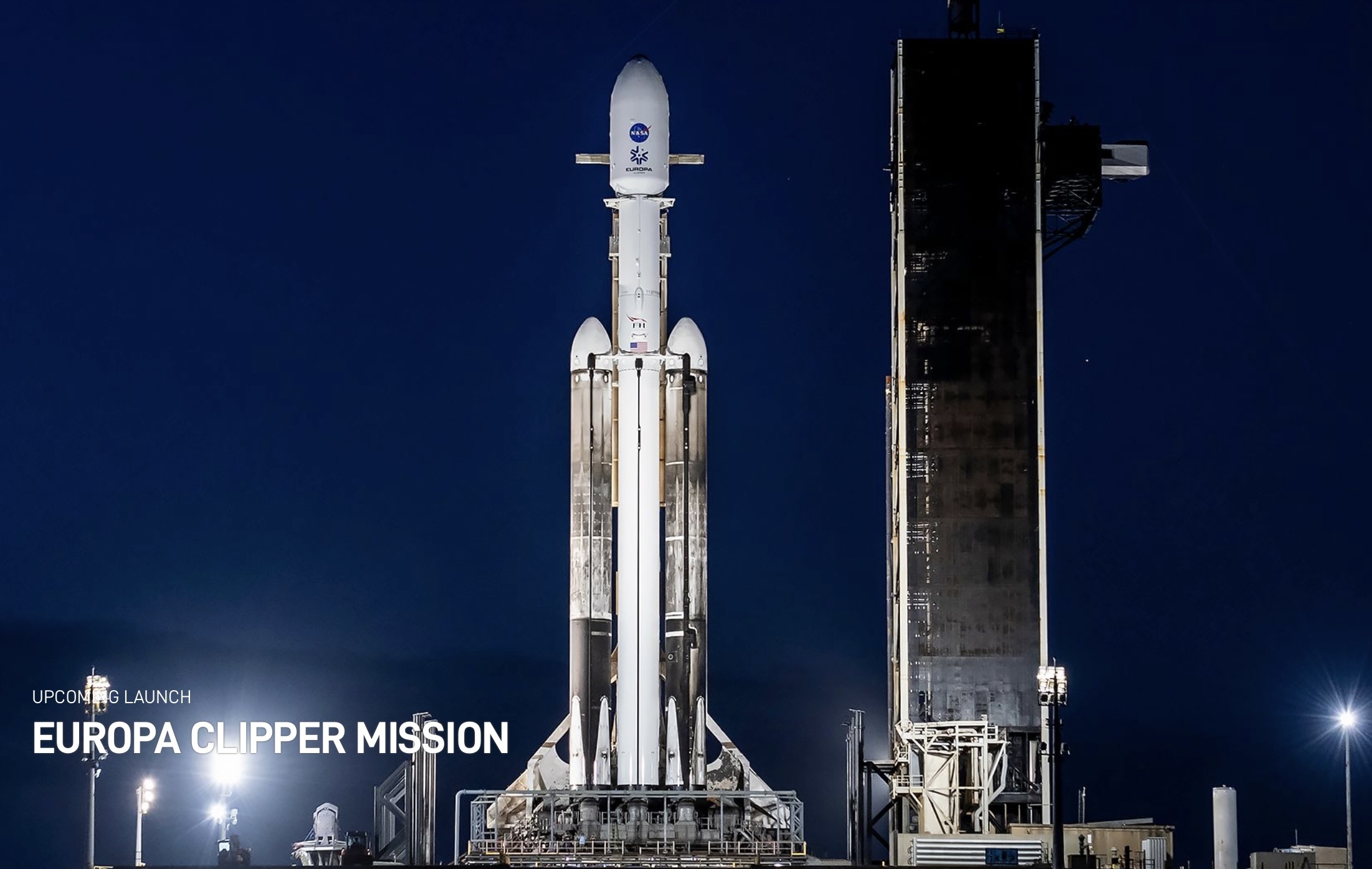
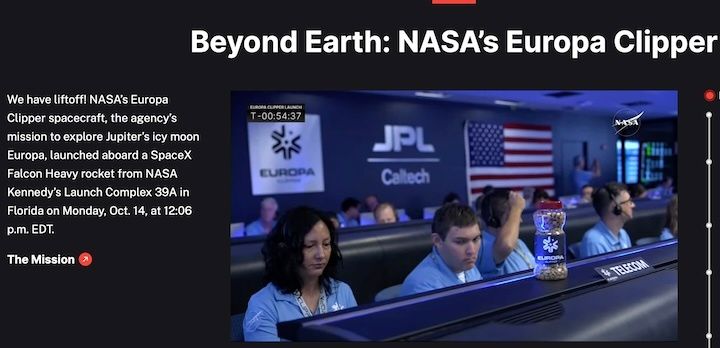

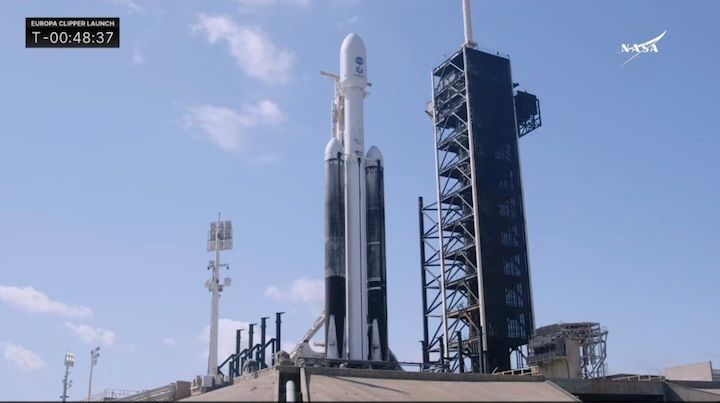
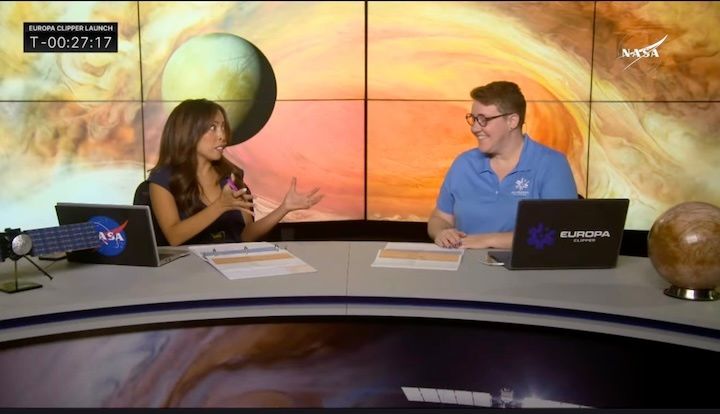
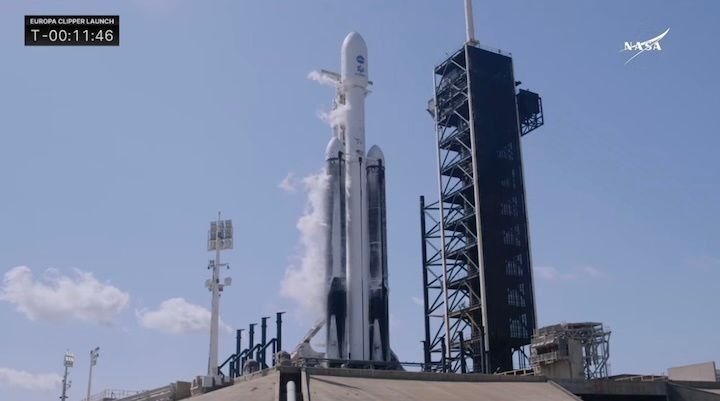


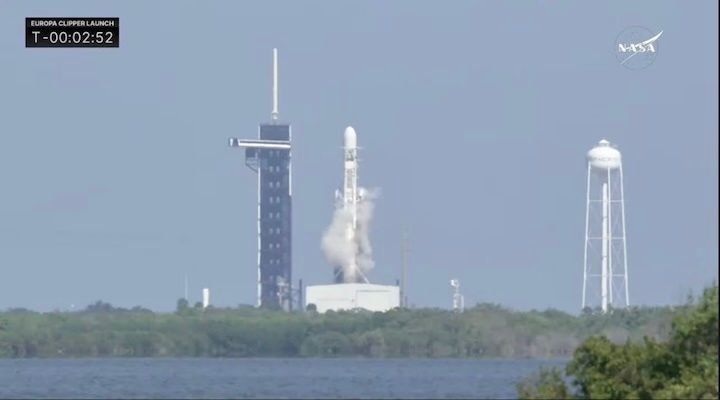
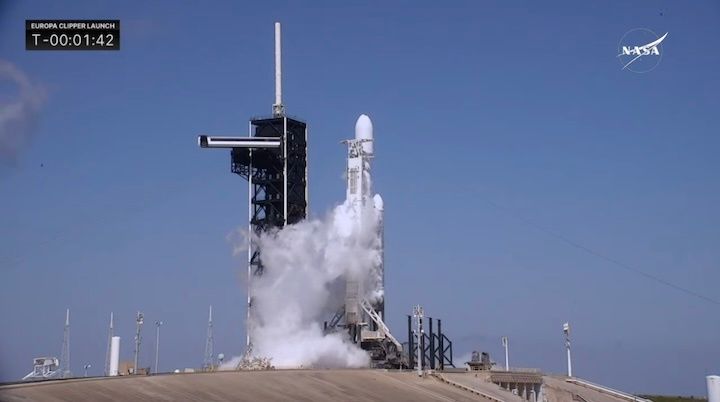
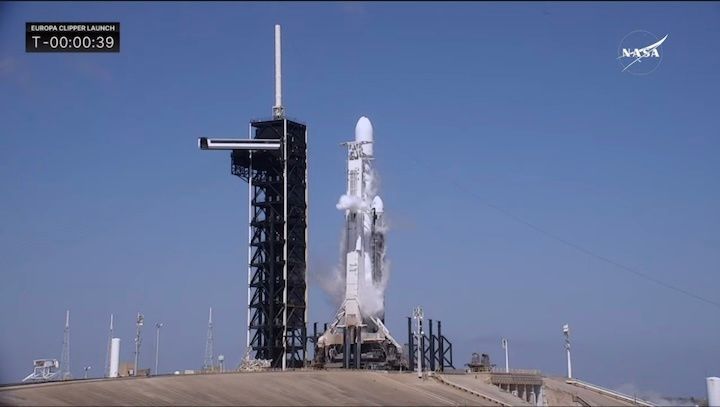
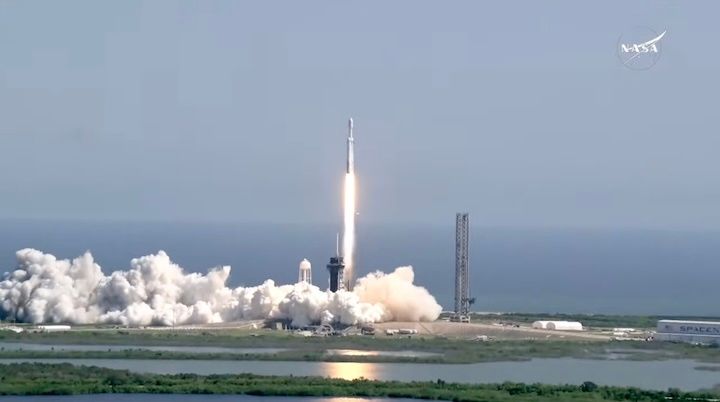
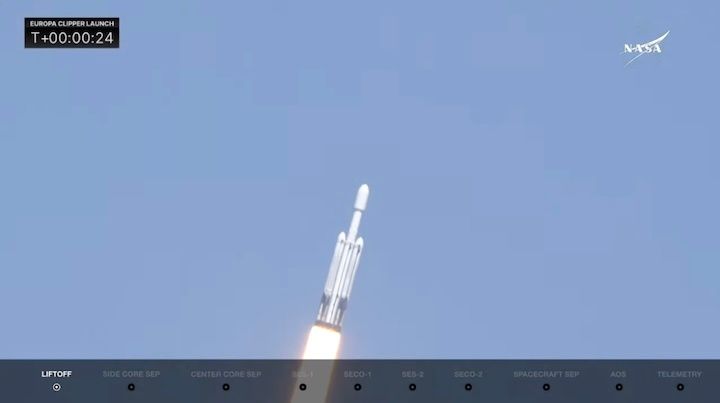
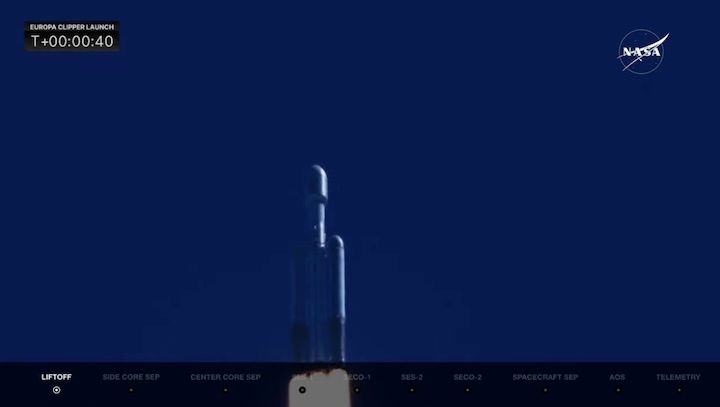
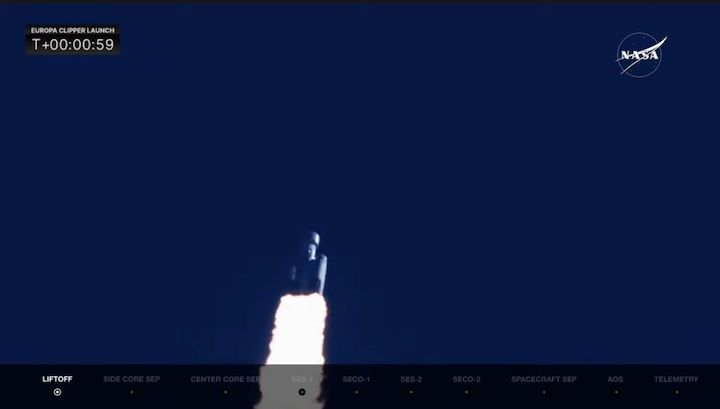
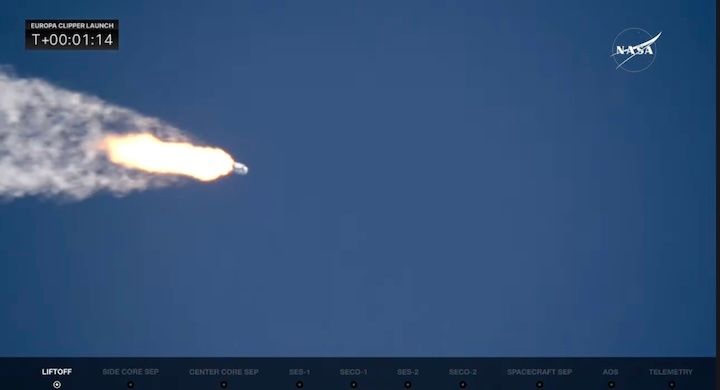
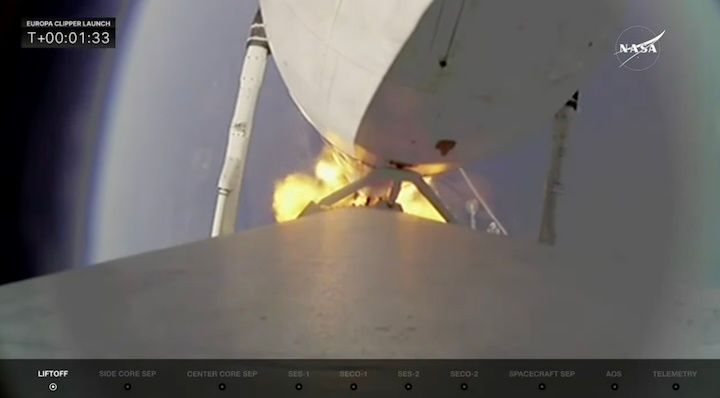
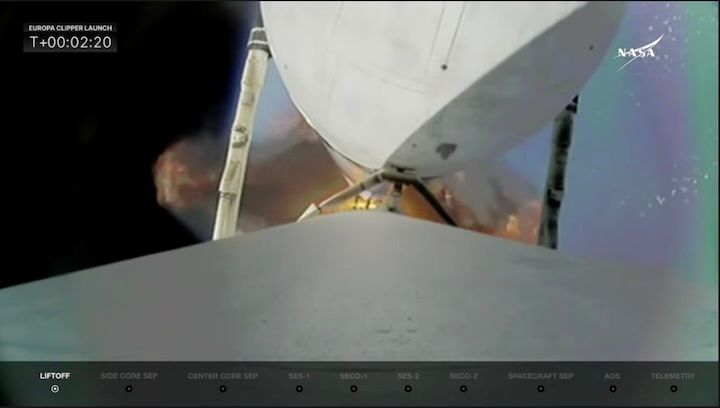
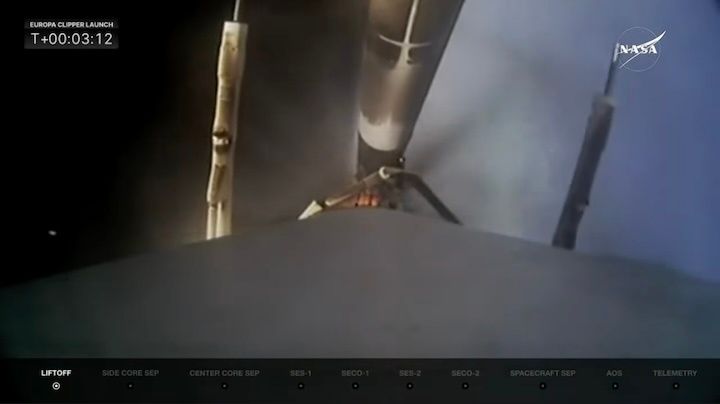

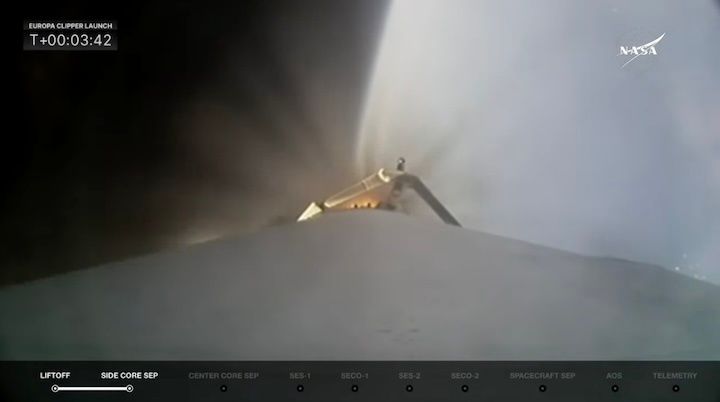
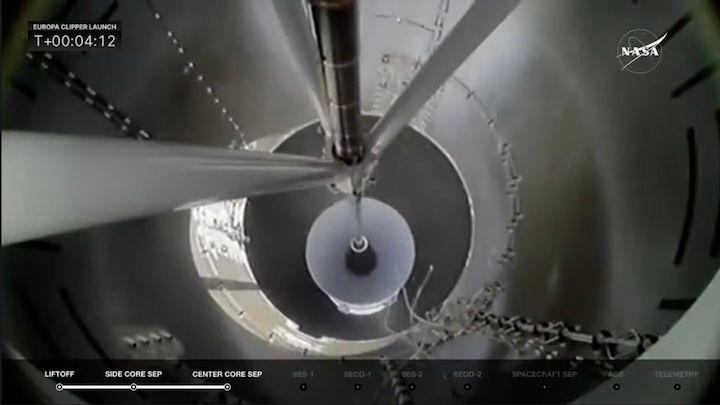
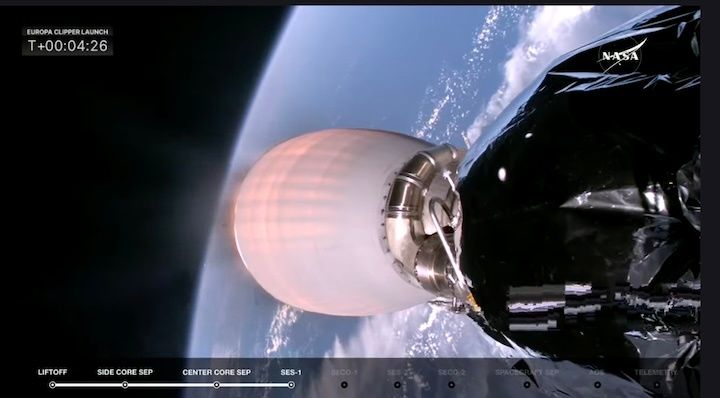
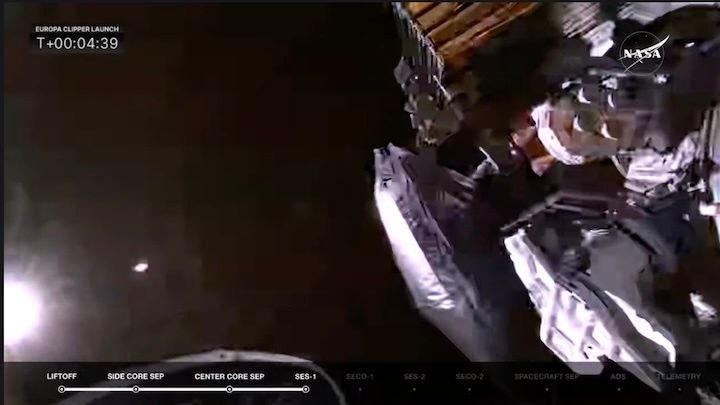


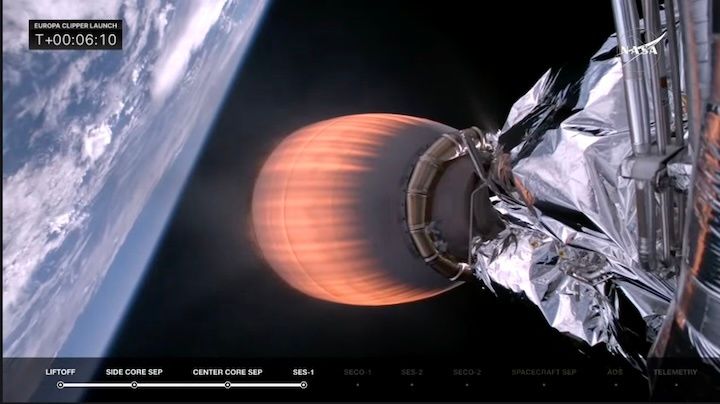
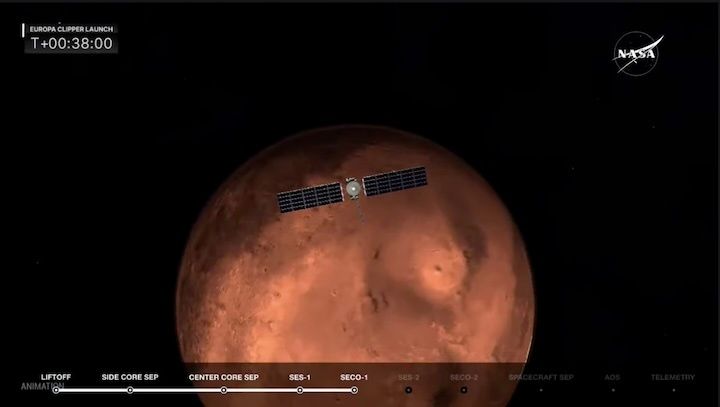
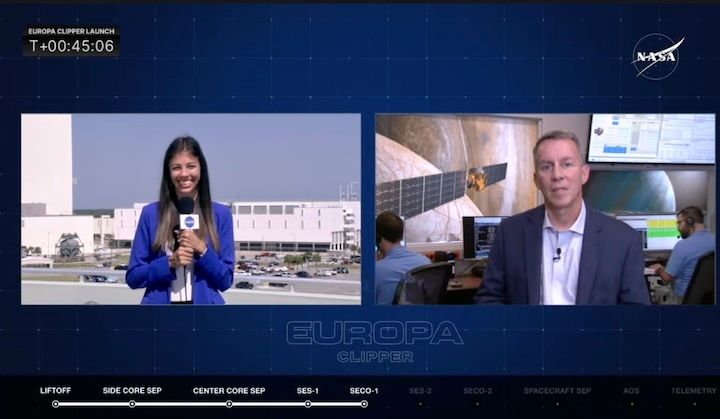


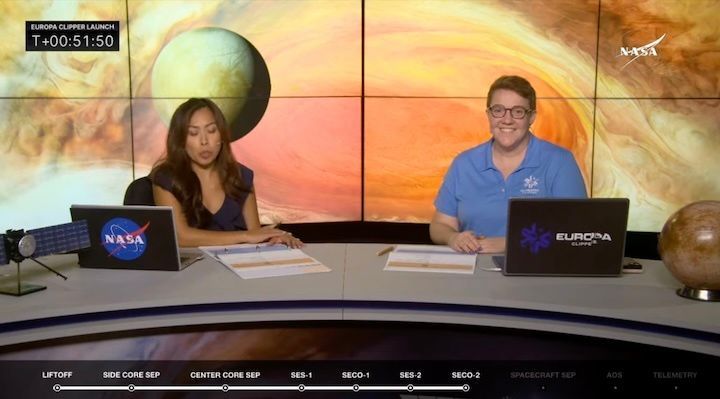
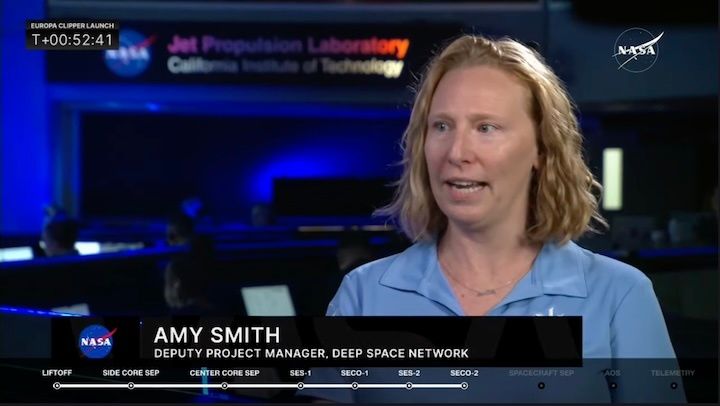
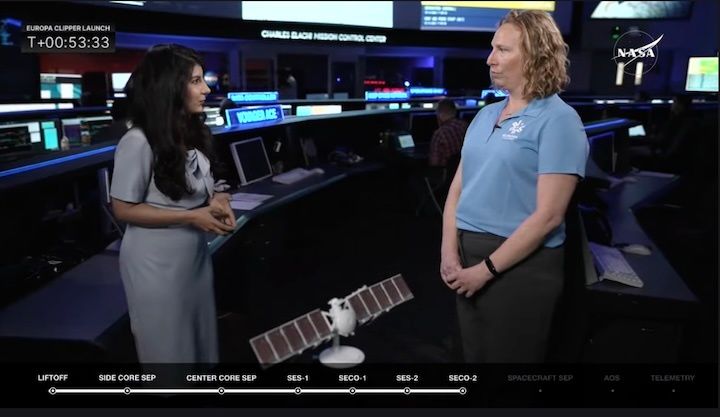
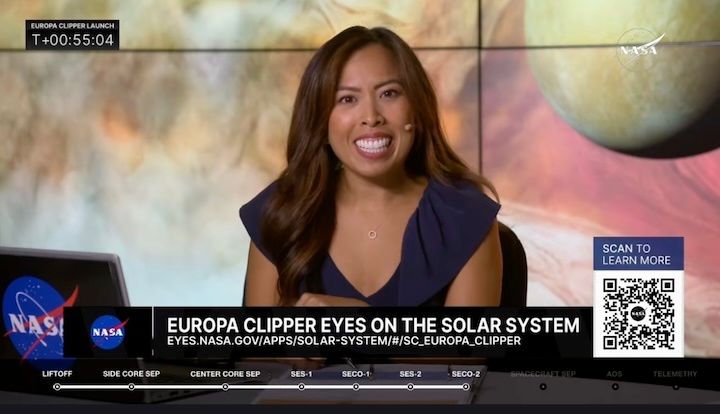
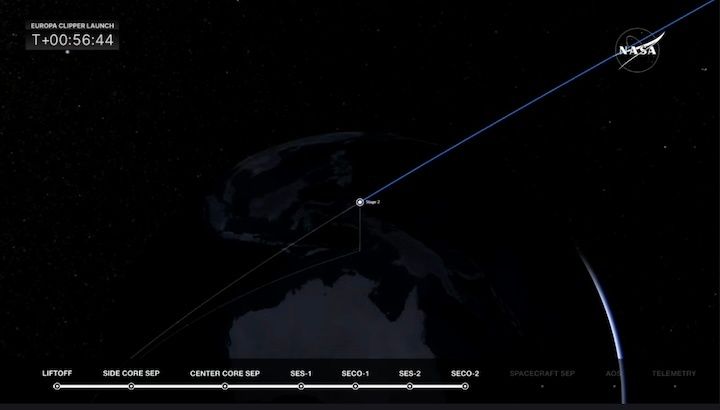
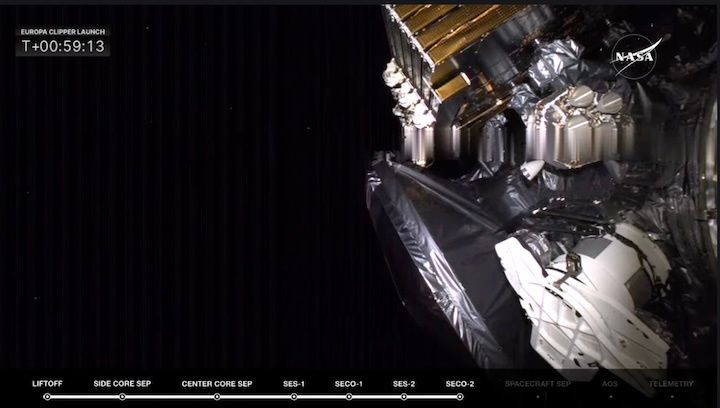
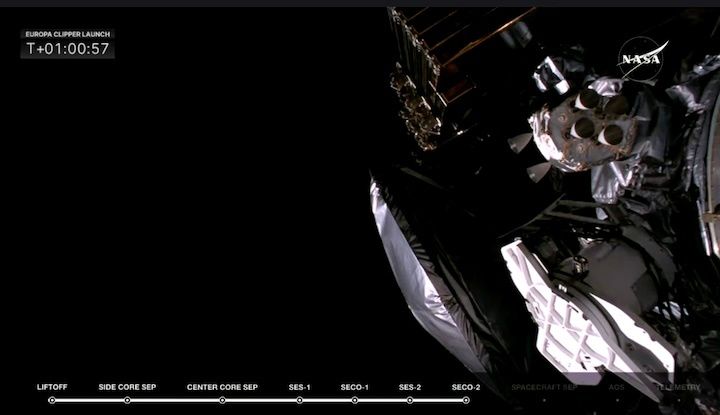
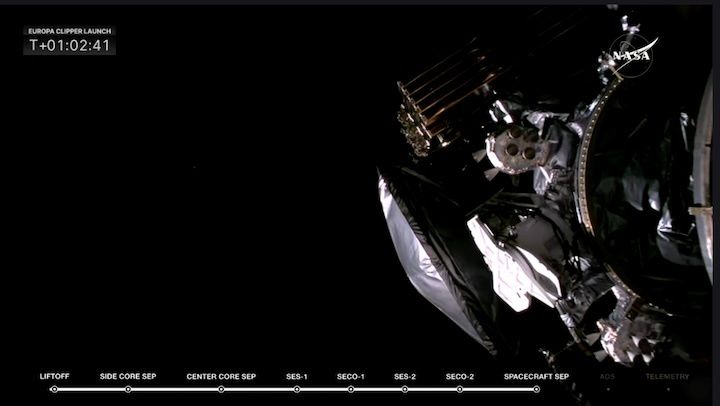
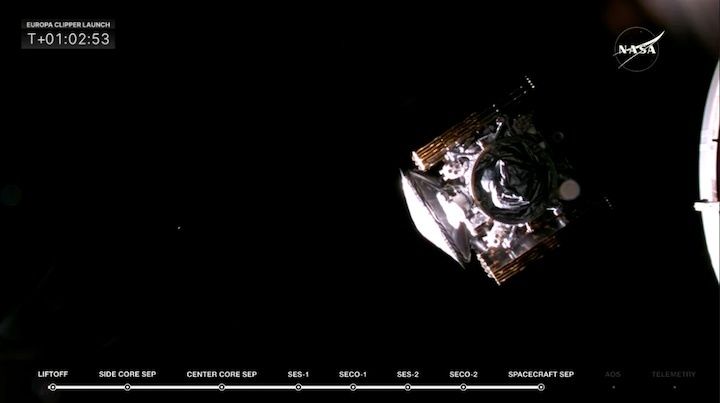

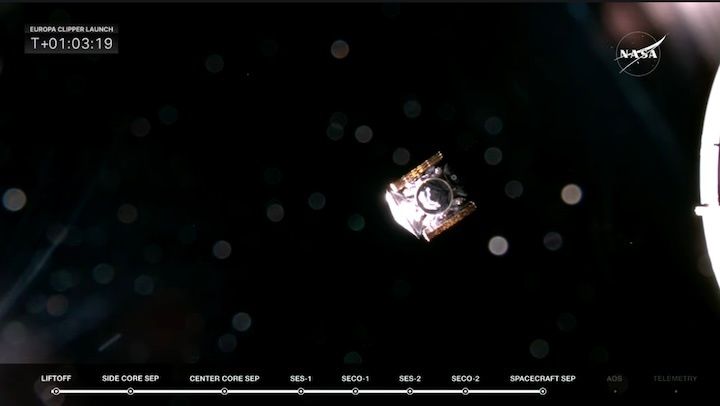

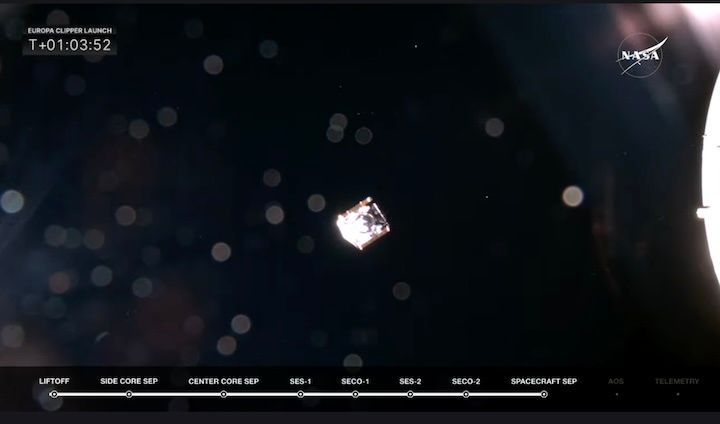

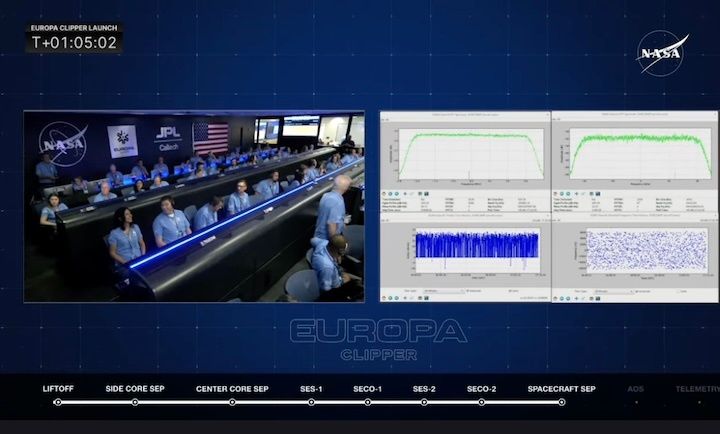
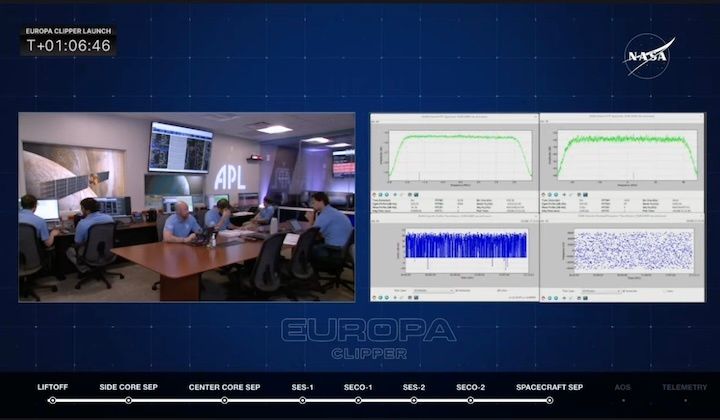
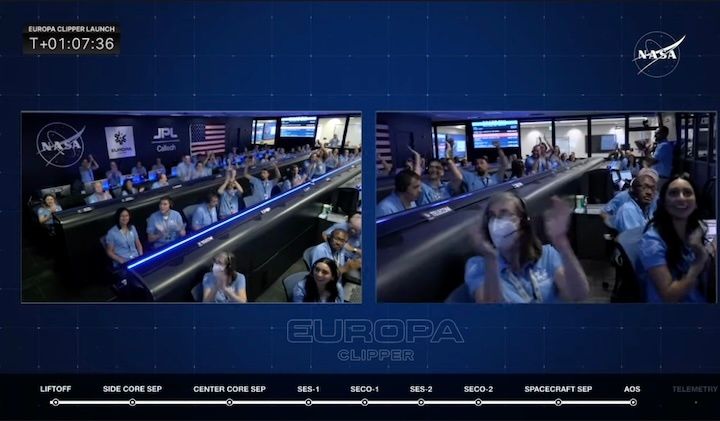
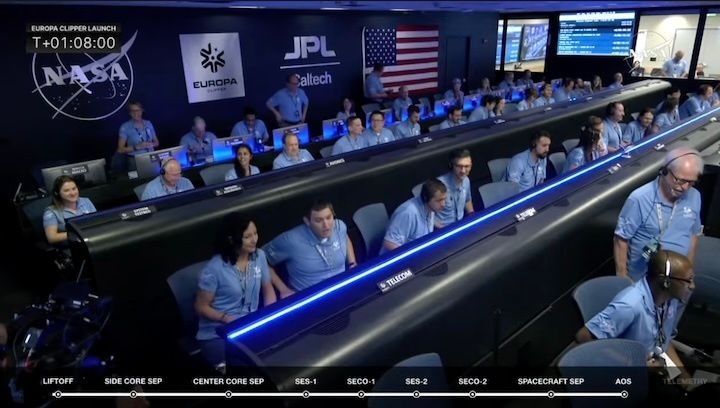
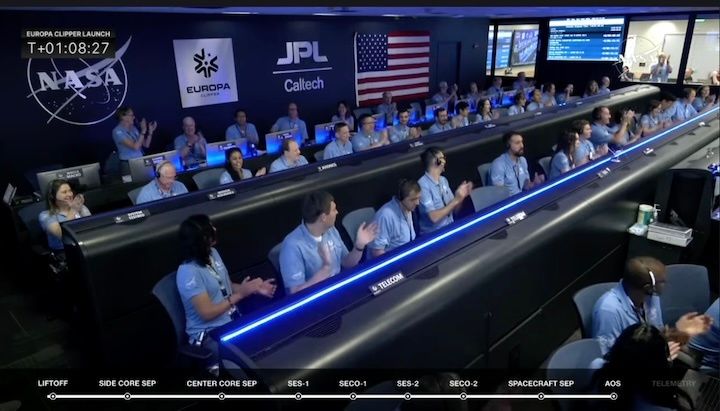

Quelle: NASA TV
